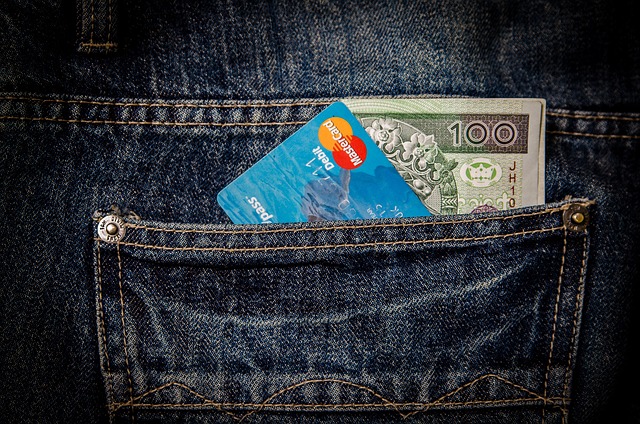How to Download Transaction History from Cash App: Complete, Step-by-Step Guide
Author: Jameson Richman Expert
Published On: 2025-11-05
Prepared by Jameson Richman and our team of experts with over a decade of experience in cryptocurrency and digital asset analysis. Learn more about us.
If you’re looking for clear, reliable instructions on how to download transaction history from Cash App, this comprehensive guide walks you through every method — mobile and web — plus tips for tax reporting, exporting to CSV/PDF, troubleshooting, and keeping your financial data secure. Whether you need a single receipt, monthly statements for bookkeeping, or a full activity export for taxes or audits, you’ll learn practical steps, example workflows, and best practices to get clean, usable records fast.

Why download your Cash App transaction history?
- Taxes and reporting: Prepare 1099s or reconcile income if you received payments for goods or services.
- Bookkeeping: Import transactions into accounting software (QuickBooks, Xero, Excel) to reconcile bank accounts, categorize expenses, or track profit and loss.
- Disputes and evidence: Provide receipts when disputing a charge or proving payment to a vendor or friend.
- Record-keeping: Maintain a searchable archive of payments and deposits for personal finance management.
Typical formats and what to expect
When you download Cash App history, you’ll commonly receive data in these formats:
- PDF statements: Monthly summaries suitable for printing and archiving.
- Individual transaction receipts (PDF or shareable link): Useful for a single payment or refund proof.
- CSV or spreadsheet format: Best for importing into Excel, Google Sheets, or accounting software for bulk analysis. (If a CSV option isn’t visible in your account, you can request help via Cash App Support.)
Essential resources and official help
Before following the steps below, it's helpful to bookmark Cash App’s official support pages and general tax guidance:
- Cash App Help (official) — support articles and contact options.
- Cash App on Wikipedia — background and product context.
- IRS — for tax guidance on reporting digital payment income (1099-K/1099-B and other forms).

Method 1 — Download transaction history using the Cash App mobile app (iOS & Android)
For many users, the fastest way to get a receipt or a short list of transactions is right from the Cash App mobile app. Steps and menu labels may vary slightly by app version; if you can’t find an option, update the app and check the official Help Center.
Download an individual transaction receipt
- Open Cash App and sign in.
- Tap the Activity tab (usually a clock icon at the bottom).
- Find and tap the transaction you want to export.
- In the transaction detail screen, look for a Share, Receipt, or Export option — often represented by three dots or a share icon.
- Choose Email or Save to Files (or Share to another app). Sending the receipt to your email converts it into a PDF or text you can save.
Use this method if you only need proof for a single payment or refund. Save the emailed PDF into a folder structure by year/month for long-term records.
Download monthly statements (if available in-app)
Cash App provides account statements (monthly PDFs) for many users. If you see a Statements section in your settings:
- Tap your profile icon or Settings inside the app.
- Look for Documents or Statements (some versions label it differently).
- Select the month(s) you need and download the PDF file(s) to your device or email them to yourself.
If you don’t see Statements, proceed to the web method below or contact support to request historical statements.
Method 2 — Download transaction history from Cash App on the web (desktop)
Using a desktop browser is often easiest for exporting multiple months or compiling long date ranges. Not all features are available on the mobile app, so the web dashboard can provide additional export capabilities.
Typical web steps
- Open your browser and sign in at the Cash App web portal (use official login pages only; do not enter credentials on unfamiliar sites).
- Navigate to Activity or Statements in the account menu.
- For statements, choose the month(s) you want and click Download to get a PDF.
- If a CSV export option is present, select your date range and click Export CSV (file will download to your computer).
Note: Availability of CSV export varies by account. If you need a CSV and the web portal shows only PDF statements, continue to the “Requesting custom exports” section below.
Method 3 — Requesting custom exports or full history from Cash App Support
If your account doesn’t provide a direct CSV export or you need a custom date range (e.g., several years worth of transactions), you can request that data from Cash App Support.
- Open the Cash App Help page: https://cash.app/help.
- Use the contact option (chat or email) and clearly request a full transaction export for the specific date range and preferred format (CSV or spreadsheet preferred for accounting).
- Provide proof of account ownership if asked (last 4 digits of linked card, email used, etc.).
- Wait for a confirmation email and a secure link or attachment with your requested export.
Tip: When requesting a CSV, state the exact columns you want (date/time, type, counterparty, memo, transaction ID, amount, fee, balance) to speed up processing.

Method 4 — Use bank statements or linked bank account records
If Cash App doesn’t supply the exact export you need, use your connected bank or debit card statements to reconstruct payments:
- Log in to your bank’s online portal and download monthly statements in PDF or CSV format.
- Filter for Cash App transactions (look for “Cash App”, $Cashtag, or the relevant descriptors in the transaction memo).
- Cross-check with Cash App receipts for transaction IDs and memos to ensure consistency.
This approach is especially useful for reconciling outgoing payments that cleared through your linked bank account.
Converting PDFs to CSV or spreadsheet for accounting
Many users prefer CSV for import into accounting systems. If you only have PDFs, convert them to CSV using reliable tools or manual processes:
- OCR and converter tools: Use Adobe Acrobat Pro, Tabula (open-source), or specialized PDF-to-CSV services to extract tabular data.
- Manual copy/paste: For one-time, short ranges, copy data into Excel and clean columns (date, description, amount, type).
- Hire a bookkeeper: For large, complex archives, outsourcing conversion and categorization saves time and reduces errors.
Always verify the converted data by sampling entries and reconciling totals against the original PDF or your bank statement.
How to prepare Cash App exports for taxes
When preparing tax returns, you may need to identify taxable income, deductible expenses, and track cost basis for crypto or sold goods. Recommendations:
- Download all statements and receipts spanning the tax year(s).
- Separate personal transfers (gifts, reimbursements) from business receipts. Cash App payments for goods/services are often reportable income if you are selling products or providing services.
- Check for tax forms: Cash App may provide 1099-K/1099-B or other tax documents if applicable. Verify via your Cash App profile under tax documents or announcements.
- Use a tax professional if you have significant business activity or crypto transactions. The IRS has guidance on electronic payments and reporting at irs.gov.

Importing Cash App data into accounting tools (QuickBooks/Excel/Xero)
Common workflow to get Cash App transactions into accounting software:
- Get CSV of transactions by month or full date range.
- Open CSV in Excel or Google Sheets and clean columns (date format, remove header/footer rows, standardize payee names).
- Map columns to your accounting software’s import template (e.g., Date, Description, Debit, Credit, Category, Memo).
- Run the import in a test environment and verify totals match the Cash App statement or bank reconciliation.
Useful resource: QuickBooks import formats — see QuickBooks help pages for CSV templates or import tools.
Troubleshooting common problems
- Missing Statement/Export option: Update the app or use the web portal. If still missing, contact Cash App Support and request a custom export.
- Incorrect or incomplete data: Re-run the export for the exact date range. If discrepancies persist, compare against your bank statements and ask Support to investigate.
- Can’t find a specific transaction: Use the Activity search and filters; try different date ranges. If it’s older than the app’s history window, request a historical export from Support.
- Security concerns: If you suspect unauthorized access, change your password, unlink cards, and contact Cash App support immediately. Enable app passcode/Face ID and secure your email.
Advanced tips and example workflows
Workflow A — Monthly bookkeeping for freelancers
- On the first business day of the month, download monthly Cash App statements (PDF).
- Export or convert them to CSV and import to a bookkeeping worksheet.
- Classify transactions into revenue and expense categories.
- Reconcile with bank statements and issue invoices/receipts as needed.
Workflow B — Year-end tax prep
- Collect all monthly statements and any 1099 forms from Cash App or third parties.
- Consolidate into a single CSV, sort by date, and calculate total reportable income.
- Work with a tax advisor to allocate revenue and deduct costs; file returns with supporting documentation ready in PDF format.

Privacy and security best practices
- Keep your account email and password strong and unique. Use a password manager.
- Enable two-factor authentication (2FA) through your phone and secure email account.
- Do not share exported files (CSV/PDF) with untrusted parties; redact sensitive data if you must share them.
- Use secure Wi‑Fi and avoid public networks when accessing account data.
- Store backups of exported statements in encrypted cloud storage or a secured local drive.
When to contact Cash App support
Contact Cash App support if you need:
- A custom export for a long date range or CSV format.
- Transaction IDs or evidence for dispute resolution.
- Help recovering lost statements or account access issues.
Start at the official Cash App Help page: https://cash.app/help. Keep account details ready for verification.
Example: Exporting and consolidating one year of transactions
Example steps for consolidating a year’s worth of data into a single CSV for your accountant:
- Log into Cash App web and download each month’s statement for the year as PDF.
- Convert each monthly PDF to CSV using Tabula or Adobe Acrobat export.
- Combine all monthly CSV files into one master spreadsheet. Standardize headers: Date, Description, Amount, Type, Transaction ID, Balance, Memo.
- Add a column for Category (e.g., Revenue, Supplies, Meals) and tag each line.
- Run totals to reconcile with the year-end Cash App statement or your bank account totals.

Third-party tools and integrations — use caution
Some third-party services claim to sync Cash App data automatically. If you choose to use them:
- Verify the vendor’s reputation and privacy policy.
- Avoid giving full account credentials where possible; prefer API-based connections with limited scopes.
- Regularly review the third party’s access and revoke it when not needed.
Related reading for crypto traders and platform comparisons
If you use Cash App for crypto purchases or transfers and want to learn about broader trading platforms, market trends, or trading guides, these resources may help:
- Bybit’s recent volume record — what it means for traders — useful if you’re tracking liquidity and want context for crypto activity.
- How to trade on Bybit App — mobile trading guide — practical if you move between Cash App and active crypto trading platforms.
- Apple Mexico trade-in program — market dynamics and sustainability — example of digital finance and device lifecycle considerations for payment apps users.
Recommended exchanges and sign-up links (for traders)
If you’re a crypto trader and want to explore reliable exchanges where you can deposit funds after exporting Cash App transactions, consider these platforms (use referral links below if you want to get started):
- Binance — register: Sign up at Binance
- MEXC — register: Sign up at MEXC
- Bitget — register: Sign up at Bitget
- Bybit — register: Sign up at Bybit

FAQ — Quick answers
Can I download all transactions at once?
Cash App sometimes offers monthly statement downloads. For a full multi-year export, request a custom export from Cash App Support if a bulk CSV option isn’t visible.
Does Cash App provide CSVs for accounting?
Some accounts have CSV export; others only have PDFs. If CSV isn’t available, request a CSV from Support or convert PDFs using a trusted tool to create a clean CSV for accounting.
What if a transaction is missing or incorrect?
Compare with your bank statement, then contact Cash App Support with transaction ID, date, and amount so they can investigate.
Are Cash App statements acceptable for audits?
Yes — official PDFs from Cash App and bank statements are commonly used as evidence in audits. Keep copies of receipts and correspondence to support any unusual entries.
Final checklist before you finish
- Identify the exact date range you need.
- Decide the preferred format (PDF for records, CSV for accounting).
- Check both the mobile app and web portal for built-in options.
- If needed, contact Cash App Support to request a custom export.
- Securely store or encrypt exported files and back them up.
Downloading your Cash App transaction history doesn’t have to be complicated. Use the app for quick receipts, the web portal for bulk statements, and Cash App Support for custom or CSV exports. For bookkeeping and tax preparation, convert or consolidate data into a clean CSV and reconcile totals against bank statements. If you trade crypto or want to explore alternative exchanges after exporting your funds, check out the resources and exchange links above to continue building a secure, organized financial system.
Need help with a specific export or format? Tell me what device you’re using (iPhone, Android, or desktop), the date range you need, and whether you want PDF or CSV — I’ll give step-by-step tailored instructions.